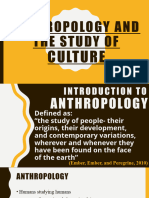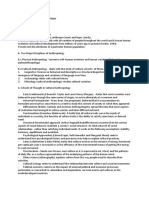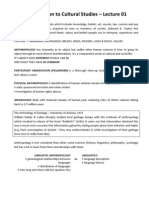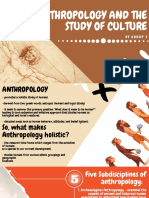0% found this document useful (0 votes)
30 views7 pagesCSS 2016
The document discusses the definition and characteristics of culture, emphasizing its learned, social, inculcated, and adaptive nature. It distinguishes anthropology from other social sciences by highlighting its holistic approach and focus on human biology, culture, and various subfields. Additionally, it addresses barriers to change, anthropological research techniques, the definition and functions of religion, theories of social evolution, and key concepts such as acculturation, emic vs. etic perspectives, and ethnocentrism.
Uploaded by
Imran UmarCopyright
© © All Rights Reserved
We take content rights seriously. If you suspect this is your content, claim it here.
Available Formats
Download as DOCX, PDF, TXT or read online on Scribd
0% found this document useful (0 votes)
30 views7 pagesCSS 2016
The document discusses the definition and characteristics of culture, emphasizing its learned, social, inculcated, and adaptive nature. It distinguishes anthropology from other social sciences by highlighting its holistic approach and focus on human biology, culture, and various subfields. Additionally, it addresses barriers to change, anthropological research techniques, the definition and functions of religion, theories of social evolution, and key concepts such as acculturation, emic vs. etic perspectives, and ethnocentrism.
Uploaded by
Imran UmarCopyright
© © All Rights Reserved
We take content rights seriously. If you suspect this is your content, claim it here.
Available Formats
Download as DOCX, PDF, TXT or read online on Scribd
/ 7



















































































































